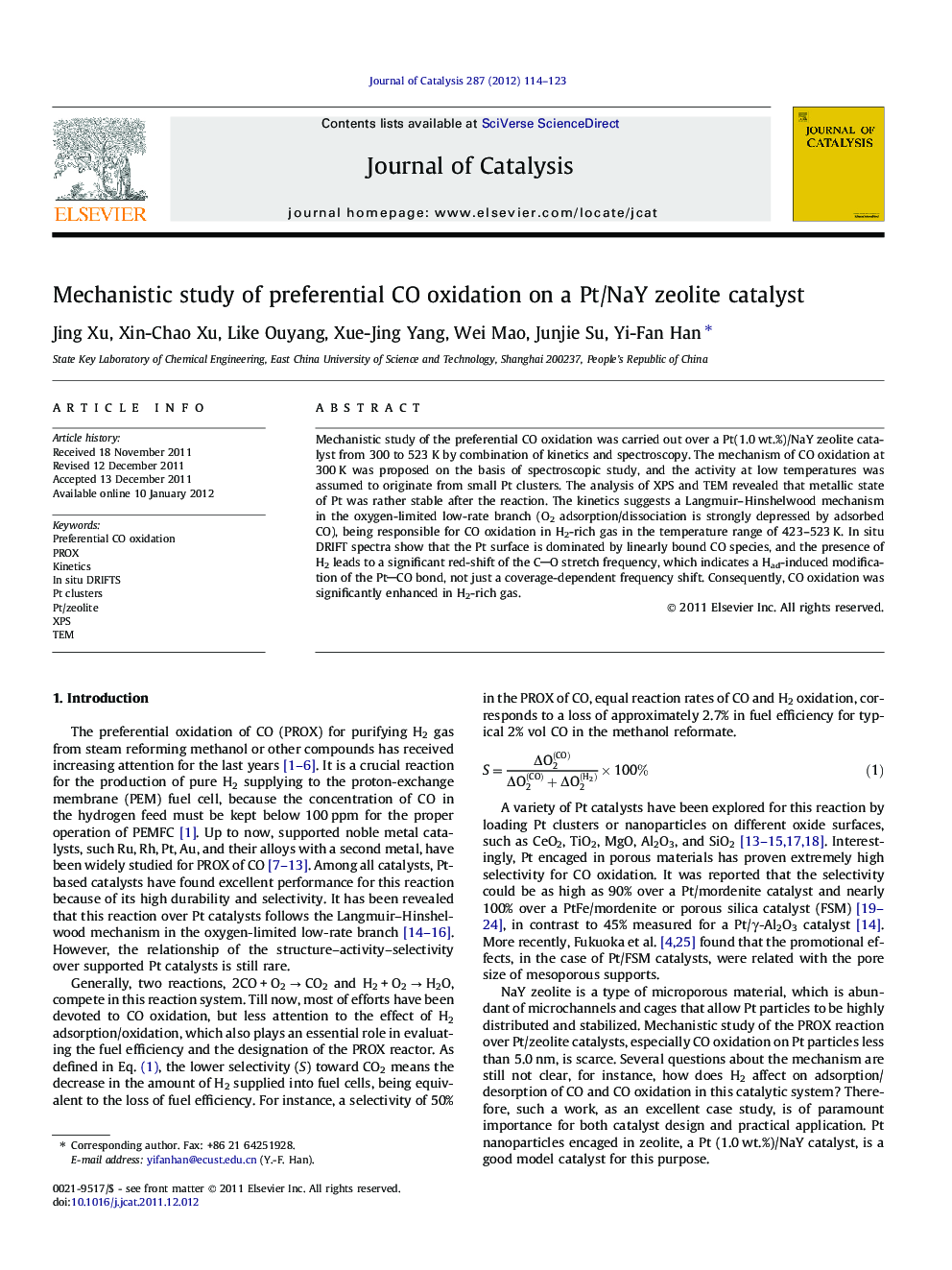| Article ID | Journal | Published Year | Pages | File Type |
|---|---|---|---|---|
| 61505 | Journal of Catalysis | 2012 | 10 Pages |
Mechanistic study of the preferential CO oxidation was carried out over a Pt(1.0 wt.%)/NaY zeolite catalyst from 300 to 523 K by combination of kinetics and spectroscopy. The mechanism of CO oxidation at 300 K was proposed on the basis of spectroscopic study, and the activity at low temperatures was assumed to originate from small Pt clusters. The analysis of XPS and TEM revealed that metallic state of Pt was rather stable after the reaction. The kinetics suggests a Langmuir–Hinshelwood mechanism in the oxygen-limited low-rate branch (O2 adsorption/dissociation is strongly depressed by adsorbed CO), being responsible for CO oxidation in H2-rich gas in the temperature range of 423–523 K. In situ DRIFT spectra show that the Pt surface is dominated by linearly bound CO species, and the presence of H2 leads to a significant red-shift of the CO stretch frequency, which indicates a Had-induced modification of the PtCO bond, not just a coverage-dependent frequency shift. Consequently, CO oxidation was significantly enhanced in H2-rich gas.
Graphical abstractMechanistic study of PROX of CO was carried out over a Pt(1.0 wt.%)/NaY zeolite catalyst from 300 to 523 K by combination of kinetics and spectroscopy. The activity of CO oxidation at 300 K was assumed to originate from Pt clusters less than 1.0 nm. In the presence of H2, a significant red-shift of the CO stretch frequency was observed in DRIFT spectra and CO oxidation was significantly enhanced.Figure optionsDownload full-size imageDownload high-quality image (228 K)Download as PowerPoint slideHighlights► Pt clusters (<1.2 nm) responsible for CO oxidation over the Pt/NaY catalyst at 300 K. ► H2 promotional effects on CO oxidation in the temperature range 423–523 K. ► CO oxidation in H2-rich gas following the L–H mechanism in the low-rate branch.
